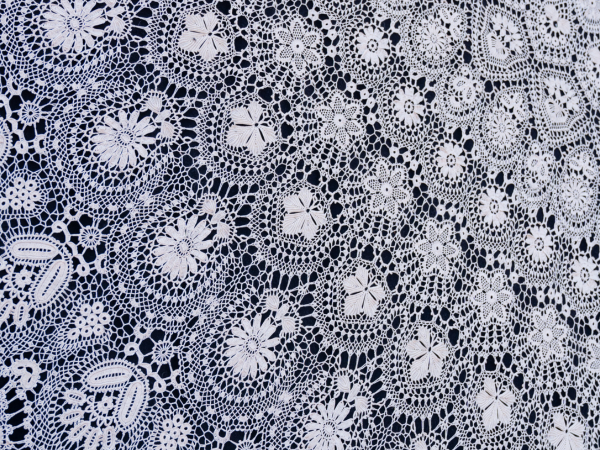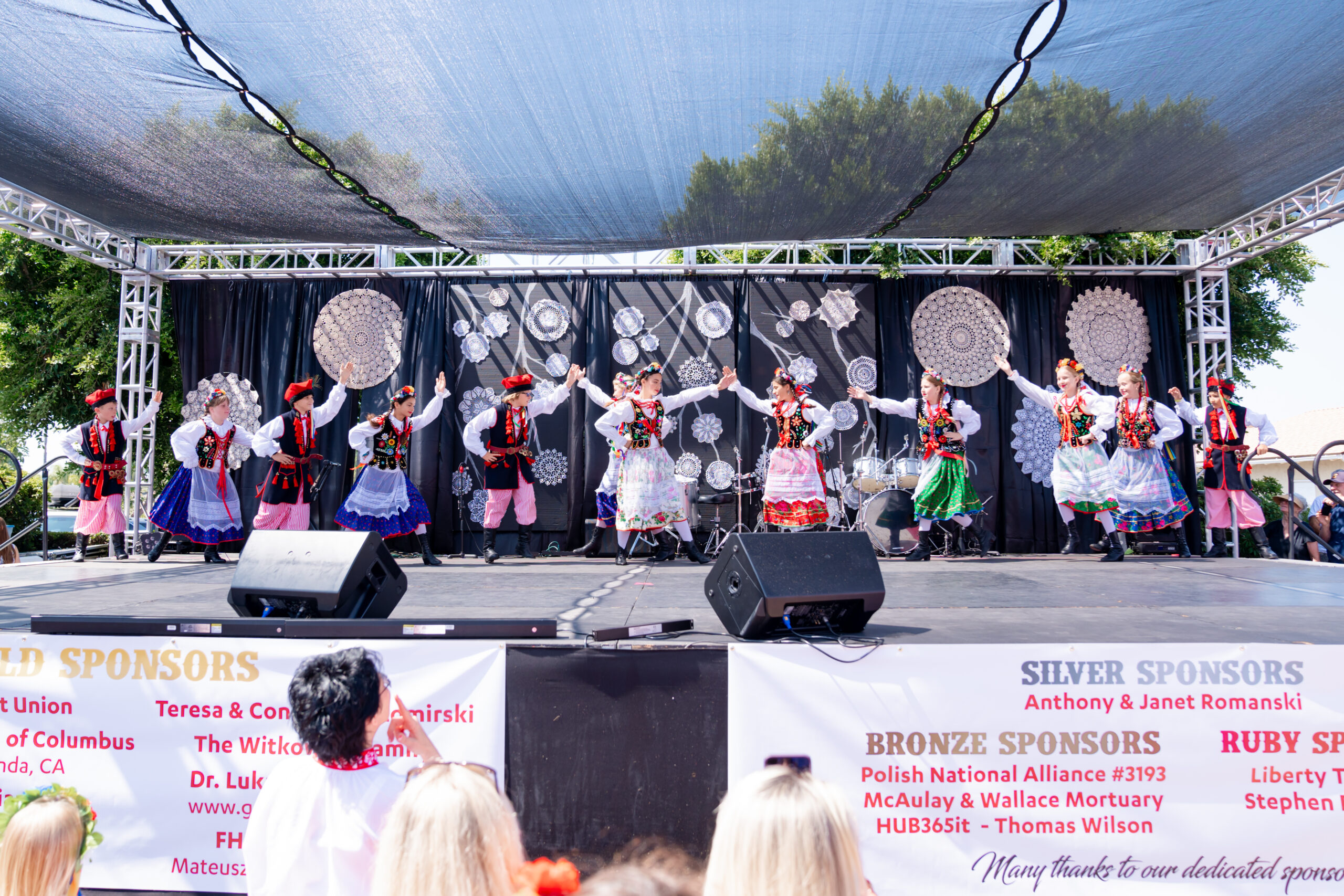WHEN IMMIGRANTS settle in the United States, they often assimilate clothing and customs to blend in with the culture — but one of the last things that conforms is their sense of what constitutes excellent home cooking, art and celebrations. These cultural preferences can last for generations, and as they are shared with new friends in a new country, weave our country’s unique tapestry of diversity.

KONIAKOW LACE FROM POLAND HAS A LONG AND STORIED HISTORY. PHOTOS BY YUAN WANG/DIOCESE OF ORANGE
On Sept. 21 and 22, the Polish community gathered at the St. John Paul II Polish Center in Yorba Linda for the 45th annual Dozynki Festival. The Polish Center is home to about 1,700 Polish Catholics. The Dozynki is a traditional harvest fest designed to showcase Polish art, food and music to strengthen cultural ties to the more than 30,000 Polish people living in Orange County. There were the usual food booths, music and beautiful traditional costumes that graced the numerous booths at the festival. But this year included a new exhibition of Polish lace or crochet from an area in the southern part of the country called Beskid Three Villages (comprised of Koniakow, Istebna and Jaworzynka.

GUESTS OF THIS YEAR’S DOZYNKI FESTIVAL GOT TO SEE A GIANT 16.4-FOOT DOILY WHICH HOLDS THE GUINNESS WORLD RECORD FOR BEING THE LARGEST DOILY IN THE WORLD.
This cottage industry started to take off in the early 20th century when Zuzanna Walach, the wife of then-mayor Pavel Golik, began making and selling exquisite lace with intricate designs inspired by the beautiful pastoral environment surrounding the villages. She was a master of the art and taught others.
The lace-making technique commonly known in the U.S. as crochet includes doilies, tablecloths, liturgical linens and special caps called czepiecs which are placed on a bride’s head during wedding ceremonies and worn by all traditional married women.
After 1947, Maria Gwarek formed a partnership with an organization that had shops in cities across Poland. This gave their lacework — collars, gloves and doilies — much more potential to become a regional business. The lace was made by village women with no templates — each woman created her own unique pattern, but it was always symmetric and stylized.

THE DOZYNKI FESTIVAL IS A TRADITIONAL HARVEST FEST HELD AT THE ST. JOHN PAUL II POLISH CENTER IN YORBA LINDA.
According to Lucyna Ligocka-Kohut, owner of the Koniakow Lace Center in Poland, “We are the largest lace center in the world; no other villages do this work—manual crochet. We don’t use machines like French lace makers; the patterns are passed down from generation to generation.”
Today, about 700 local women crochet Koniakow lace.
Since the 1950s, with greater distribution, lace came to the attention of fashion designers such as Christian Dior. Well-known names also became fans of the meticulous work: Queen Elizabeth II, Pope John Paul II and even a Hindu princess in India.
In 2013, some ladies started making clothing — dresses, tops, pants and swimsuits. The lacework became somewhat of an internet sensation for its beauty and intricacy. However, it did come with some controversy from the more traditionally minded crochet makers. Lady Gaga purchased lace shoes, and Beyoncé purchased special silk earrings. The work has been exhibited twice at the Royal Albert Hall in London.
“The most important part is the tradition,” said Ligocka-Kohut. “Many women still crochet and keep their own patterns to teach their daughters.”
She explained that the women make amazing compositions with no art training.
“Ten years ago, I decided to try to help carry on this tradition in Koniakow by forming the lace center,” added Ligocka-Kohut.
The women typically use fine cotton thread with cotton produced in Poland. Sometimes, they use silk for jewelry and other delicate items, which is very thin and challenging to use. Most items are white, off white or black. The black thread is also difficult to see and work with so black items are often more expensive. Dresses and clothing are made to size, as the lacework is produced without seams.
“We never have the same things in stock as it changes every day,” said Ligocka-Kohut.
Koniakow lace is very popular, especially for wedding dresses. Most clothing has to be special ordered to the measurements of the woman who will wear the item. For example, dresses can go from $1,500 on up.”
The Dozynki Festival featured many examples of lace and a fashion show exhibiting clothing from incredible wedding dresses to casual wear.
Also on exhibit was a giant 16.4-foot “doily,” which holds the Guinness Book of World Records title for being the largest doily in the world!
Bishop Vann, who knew Pope John Paul II from his time in Rome, visited the festival.
“It is very important for Orange County to have a sense of Polish culture and faith,” said Bishop Vann.
Christ Cathedral has many tributes to the Polish Community, starting with a first-class relic of St. Pope John Paul II on the altar and a tapestry of Our Lady of Częstochowa, also known as “The Black Madonna.”





